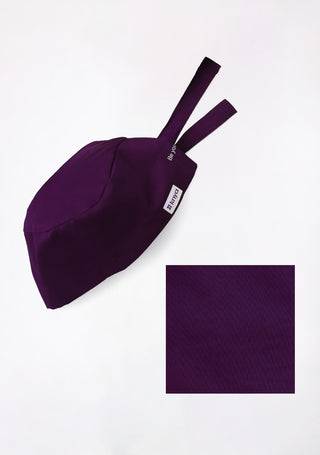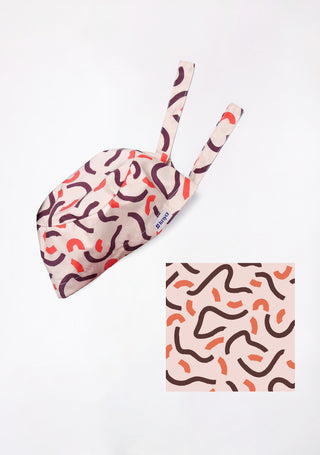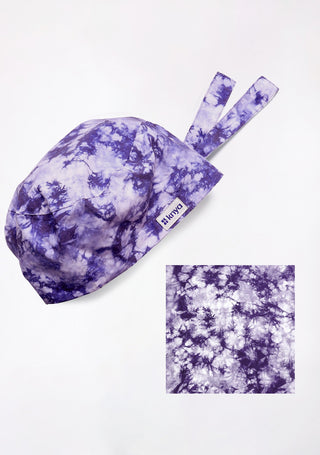Maintaining the appearance and longevity of your medical apparel is an essential part of your professional image. While stains from blood, iodine, ink, chemicals, and oil are common in healthcare settings, knowing how to treat and remove them promptly can ensure that your scrubs, lab coats, and other garments remain clean and presentable.
By following the practical steps outlined in this guide, you can effectively remove stains from your medical apparel, saving you time and money while ensuring your clothing stays in top condition.
Understanding the Challenges of Healthcare Stains
Before diving into specific cleaning methods, it’s important to understand why healthcare stains can be particularly tricky to remove. Many of the substances encountered in medical settings, such as blood, iodine, and certain medications, contain compounds that bind to fabrics. The longer these stains sit, the harder they are to remove. Additionally, some cleaning agents or techniques can damage delicate medical fabrics, which require more attention and care than regular clothing.
With that in mind, here’s how you can efficiently remove common healthcare stains from your medical apparel, ensuring that your scrubs and lab coats look professional and stay durable.
Blood Stains
Blood stains are one of the most common and noticeable stains healthcare professionals encounter. The key to removing blood stains is to act quickly, as fresh blood is much easier to remove than dried blood. Here’s how to do it:
Step-by-Step Instructions:
-
Blot the Stain: As soon as the blood comes into contact with your clothing, use a clean paper towel or cloth to blot away any excess. Avoid rubbing the stain, as this can cause the blood to set deeper into the fabric.
-
Cold Water Rinse: Rinse the affected area under cold water as soon as possible. Hot water can cause blood to coagulate, making it harder to remove, so always use cold water for blood stains.
-
Apply a Stain Remover: Use a stain remover specifically designed for protein-based stains like blood. Apply the product to the stain and gently work it into the fabric. Let it sit for about 10–15 minutes to break down the blood proteins.
-
Launder as Usual: Wash your scrubs or lab coat in cold water with a mild detergent. Be sure to check that the stain is completely gone before putting the garment in the dryer. Heat from the dryer can set the stain, making it permanent.
-
Repeat if Necessary: If the stain persists, repeat the above steps or soak the garment in a mixture of cold water and a small amount of enzyme-based detergent for several hours before washing again.
Click here to Explore All Women's Scrubs and discover our complete collection of comfortable and stylish medical apparel
Iodine Stains
Iodine, used in many medical settings for disinfecting skin before procedures, can leave a stubborn brown stain on medical apparel. The good news is that iodine stains can be treated effectively if addressed right away.
Step-by-Step Instructions:
-
Blot the Stain: If the iodine is still wet, gently blot the stain with a clean cloth or paper towel to absorb as much as possible. Do not rub the stain, as this will spread it further.
-
Apply Ammonia Solution: Mix one tablespoon of ammonia with a cup of water. Test the solution on a hidden part of the garment to ensure it doesn't cause damage. If safe, apply the ammonia solution to the iodine stain using a clean cloth. Let it sit for 5–10 minutes.
-
Rinse with Cold Water: Rinse the affected area with cold water to remove the ammonia solution and iodine residue. Be sure to do this thoroughly.
-
Launder as Usual: Wash the garment in cold water with mild detergent, and check for any remaining stain before drying. If the stain persists, repeat the process.
-
Hydrogen Peroxide Option: As an alternative, you can also use hydrogen peroxide (3%) for iodine stains. Apply it directly to the stain, let it sit for a few minutes, then rinse with cold water. This method works well to break down the iodine stain.
Ink Stains
In healthcare environments, ink from pens, markers, or printers can often spill onto medical apparel. Removing ink stains requires a different approach, but it can be done successfully if you follow the proper steps.
Step-by-Step Instructions:
-
Blot the Stain: As soon as the ink spill occurs, blot the stain gently with a clean cloth to soak up as much ink as possible. Avoid rubbing, as this can spread the ink.
-
Apply Rubbing Alcohol or Hand Sanitizer: Apply a small amount of rubbing alcohol or hand sanitizer (which contains alcohol) to the stain. Using a clean cloth, dab the stain to lift the ink. You should start to see the ink transfer to the cloth.
-
Launder as Usual: Once the ink is lifted, wash the garment in cold water with detergent. Check to ensure the stain is completely gone before drying.
-
Repeat if Necessary: If the ink stain persists, repeat the rubbing alcohol treatment and laundering steps until the stain is removed.
Tired of stiff, uncomfortable scrubs? Order the best jogger scrubs here and experience the difference
Chemical Spills (e.g., Bleach, Disinfectants)
Healthcare professionals often work with various chemicals, and spills are bound to happen. Whether it’s bleach, disinfectants, or other cleaning agents, these stains can be challenging, but it’s important to remove them promptly to prevent damage to your clothing.
Step-by-Step Instructions:
-
Blot the Spill: If the chemical is still wet, blot the affected area with a clean cloth to absorb the excess liquid. Be careful not to rub, as this can spread the spill.
-
Neutralize the Chemical: If the chemical is acidic or alkaline, you can neutralize it by applying a small amount of vinegar (for acidic chemicals) or baking soda paste (for alkaline chemicals). Let it sit for 5–10 minutes.
-
Rinse and Wash: After neutralizing, rinse the stained area with cold water and then wash the garment in cold water with detergent. Be sure to check the garment for any residual chemical stains before drying.
-
Use an Oxygen Bleach: For more stubborn stains, consider using an oxygen bleach (like OxiClean) to help lift the chemical stains. Follow the manufacturer’s instructions carefully to avoid damaging your fabric.
Oil or Grease Stains
Oil-based stains from lubricants, lotions, or other substances are common in healthcare settings. Since oil can bind to fabric fibers, it’s essential to treat the stain as soon as possible to avoid permanent damage.
Step-by-Step Instructions:
-
Blot the Stain: Gently blot the oil stain with a clean cloth or paper towel to absorb any excess oil. Do not rub, as this will spread the oil further.
-
Sprinkle Baking Soda or Cornstarch: Sprinkle a generous amount of baking soda or cornstarch on the stained area. These powders can absorb the oil. Let it sit for about 10 minutes before brushing off the powder.
-
Apply Dish Soap: Dish soap is designed to break down oil. Apply a small amount of dish soap to the stain and gently work it into the fabric with your fingers or a soft brush. Let it sit for about 5–10 minutes.
- Launder as Usual: Wash your garment in cold water with detergent. Check for any residual oil before drying, as heat can set the stain
- Repeat if Necessary: If the oil stain persists, repeat the process before drying the garment.












